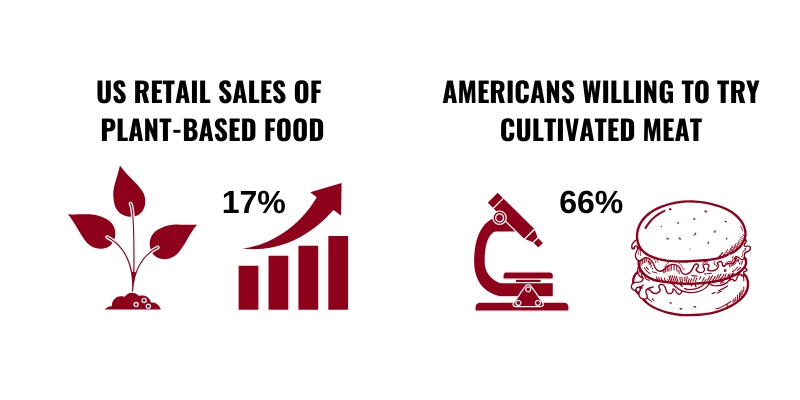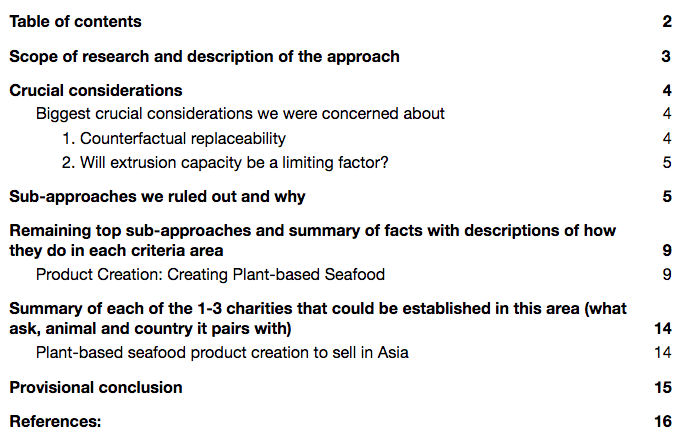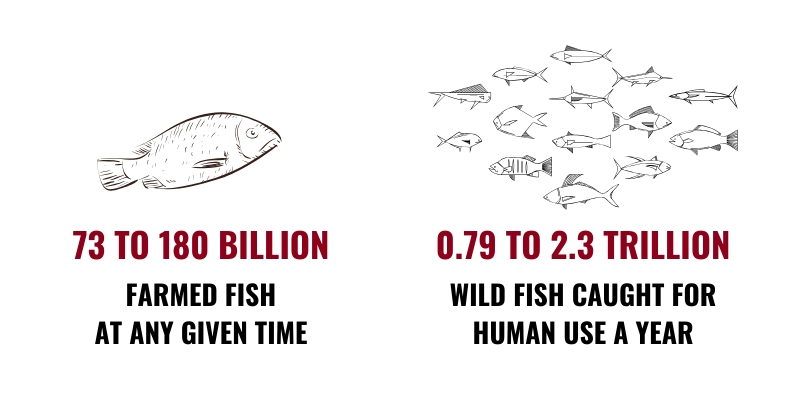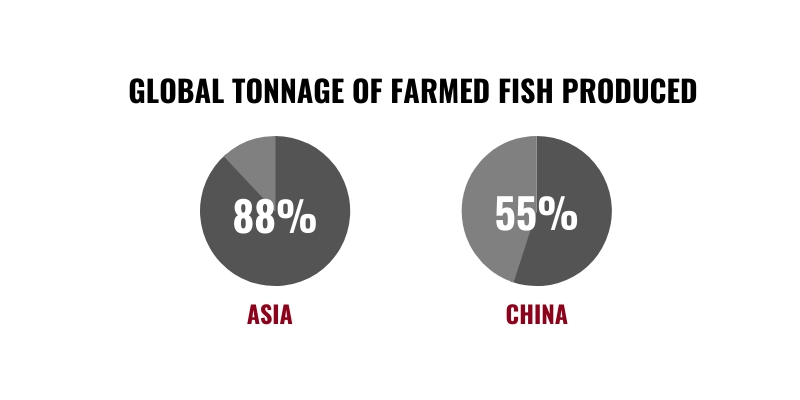Plant-Based Seafood: A Promising Intervention in Food Technology? - Charity Entrepreneurship Approach Report
By vicky_cox @ 2020-01-17T14:35 (+23)
This report is a part of our research process used to select charity recommendations in 2019
The full report is available for download here.
In 2020 we will be following a new research process (details will be published soon).
Scope of research and description of the approach
Animal advocates have been working for decades to weaken the animal agriculture industry by encouraging individuals and institutions to reduce their demand for animal products. Food technology is a novel approach to animal advocacy. It attempts to disrupt and transform the animal agriculture industry by promoting the development of taste- and cost-competitive plant-based [1] and cultivated [2] alternatives to conventional meat, dairy, and eggs. Many people see food technology as a particularly effective way to help animals as it could cause consumers to purchase fewer animal products much more quickly than using moral arguments. Currently, plant-based alternatives to animal products seem particularly promising: the plant-based sector is growing rapidly every year (e.g. US retail sales of plant-based food have grown 17% in the past year [3])

as more consumers reduce their meat consumption (as a result of the rise of flexitarianism [4]) or forgo animal products entirely. Although cultivated meat is still a number of years away [5], it looks set to disrupt the animal agriculture industry even more than plant-based alternatives have. Two-thirds of Americans would be willing to try cultivated meat [6], and many of them would be willing to try it as a replacement for conventional meat.
The following sub-approaches were considered as possible interventions:
- Product creation: creating plant-based seafood
- Focusing on marketing cultivated meat products in countries which are more likely to be supportive (even if the total market is smaller)
- Providing business-to-business cultivated meat technology services
- Lobbying internationally for fair labelling regulations and inclusion in dietary guidelines for plant-based and cultivated meat
- Forging strategic partnerships between existing industry players and new cultivated and plant-based seafood organizations
- Feasibility analysis of slab meat (focusing on priority animals such as fish, turkey, or chicken [7])
- Market and consumer research for plant-based seafood
- Technical research for plant-based seafood
Table of contents

Summary of each of the 1-3 charities that could be established in this area (what ask, animal and country it pairs with)
Plant-based seafood product creation to sell in Asia
Plant-based seafood is the product focus as seafood is currently fairly neglected in the plant-based space; only two of the top 10 plant-based meat brands in the US have their own plant-based seafood products. Moreover, fish have a very low welfare score [7], have been identified in our priority animals analysis as a high priority animal [7], and they are extremely numerous, with roughly 73 to 180 billion farmed fish alive at any given point [36], and 0.79 to 2.3 trillion wild fish caught for human use per year [37].

Most plant-based companies have focused on Western markets, but Asia seems particularly promising for two main reasons: 1) it accounts for 88% of the global tonnage of farmed fish produced, with China itself accounting for 55% of global tonnage [38], and 2) it is currently a relatively untapped market for plant-based products. Since humans influence the whole lives of farmed fish and only influence the deaths of wild-caught fish, which is a very small part of their lives, it is likely that the chosen seafood product will be seeking to replace an aquacultured fish. However, a product focusing on wild-caught fish hasn’t been entirely ruled out at this stage. You can read more about the effects of seafood substitute products on reducing the suffering of wild sea animals in a post by Wild Animal Suffering Research [39].

The countries that currently seem the most promising for this intervention are China, Japan, Singapore and Taiwan. These countries seem promising because: 1) all countries, except for Singapore, are in the top 25 fish producing countries, with China being the top producer [40]; 2) Japan and Taiwan scored well in our priority country analysis [17]; 3) Sentience Institute suggested that they could all be more open to plant-based and cultivated meat alternatives as they are unafraid of food technology [16] - this is particularly obvious for Singapore since, for example, Singapore’s scientific research agency is advancing meat alternatives as one of three priorities under its $144M food research agenda [22]; and 4) Singapore is one of the few countries in Asia where English is the first language [41] which would be useful since the co-founders would likely not be from the countries targeted.
Conclusion
Our deeper research suggests that while fish product creation in Asia is the most promising intervention within food technology in terms of impact on animals, it is not the most promising intervention for Charity Entrepreneurship to focus on. This is for several reasons:
1) letting the market fund this start-up would be better than us starting this organization as the costs of production are very high;
2) as plant-based foods become more popular, the market will be incentivized to create plant-based seafood, and it will be better for this intervention to come from non-mission aligned private capital than philanthropic dollars; and
3) when comparing this approach with alternative approaches we might recommend, such as corporate and government outreach, our research suggests it is less cost-effective.

MichaelStJules @ 2020-01-17T15:01 (+16)
I noticed that financial returns on investment weren't deducted from the costs in the cost-effectiveness analysis. Is the idea that the funding would basically be donated, and we wouldn't own any shares in the company?
If you wanted to include them, you would want to consider opportunity costs somehow, maybe by taking the difference with the expected market returns or the returns from charity (i.e. if charities have compounding returns on investment, you would apply that compounding rate to the initial investment and take the difference). This could substantially reduce the net costs, and could even flip their sign if it were the case that the expected returns on investment from the company were higher than the expected returns of every other option, although this seems unlikely.
Having investors concerned with animal welfare with majority or near-majority shares in the company might be important to balance profit vs helping animals. Maybe you can't run a for-profit this way, though?
MichaelStJules @ 2020-01-20T08:24 (+1)
Also, the founders would in some sense be earning-to-give as startup founders, although at much higher risk than many earning-to-give jobs and perhaps worse EV, since they'd probably take a lower salary, the shares are riskier, and the job isn't chosen specifically for earning-to-give potential. So the opportunity costs of the founders should be partially offset by their shares, assuming they have any, and (part of) their salaries, assuming paid for (in part) by non-EA-aligned private investors.
vicky_cox @ 2020-01-27T12:44 (+5)
Hi Michael, sorry for the belated response.
You make a lot of interesting points in your comments, some of which I hadn't considered. As a general point before replying to any specifics, I found it really difficult to model a CEA for a for-profit company so this is definitely by no means perfect as I had to make a lot of weird assumptions to try and make it work, such as assuming that all of the funding would be donated by EA funds rather than met by investors etc. and that we wouldn't own any shares in the company.
I think you make a good point, though, that financial returns probably should be included in this. Also, again I think you're right that we could have taken a more in-depth look at the counterfactuals of the co-founders as they definitely could earn-to-give in this position, though as you said they would likely take much lower salaries than the average start-up founder. Both of these factors would make this intervention more cost effective, though I am unsure by how much. Thinking about this, this just makes me more excited for plant-based start-ups to focus on plant-based seafood! Though I still don't think that CE would be best placed to help this start-up, I think the market would do a much better job.
MichaelStJules @ 2020-01-27T19:05 (+2)
Thanks for the responses!
I think it's much more likely the company would fail anyway if most of its funding had to come from donations. It would be a bad sign if you couldn't get investors on board. And the fact that a company like this doesn't already exist doesn't mean that no one would invest in it.
There are also groups whose investments focus largely on this space, and I'd guess you could get investment from them. These are three that I've come across without specifically looking:
https://straydogcapital.com/ (Sentience Institute is going to have them on their podcast, so it might be worth suggesting some questions to Jamie Harris)
So, perhaps rather than displacing EA donations, you should think of their investments as displacing the average investment from one of these companies. If plant-based seafood in Asia happens to be at least an order of magnitude more cost-effective in its welfare impact than the average investment, then the opportunity costs of investment could basically be ignored. (However, ROI for the investors also matters, since it can allow them to do more impact investing, even if each investment has lower impact, or maybe they'll donate more. There's also the question of whether or not the investors donate to EAA charities or could be convinced to and to what extent, if any, their investments compete or could compete with donations.)
If this was something CE wanted to pursue, it could start as a joint project between CE and GFI (with CE focused on selecting founders and training them on entrepreneurship generally?), and then it would be handed off to GFI and investors. Some funding could come from CE and GFI, but I'd expect it mostly to come from the investors, maybe almost all of it.
It could also be worth reaching out to Scott Weathers, who had been thinking about something like this a couple of years ago and now works at GFI. Or just talk to GFI generally. I think they'd have more useful feedback.
MichaelStJules @ 2020-01-20T09:33 (+7)
From the model:
Number of years until company becomes self-sufficient
This is the number of years that we would need outside funding for (until we made enough profits to sustain ourselves). This is an estimate based off the fact that Beyond Meat expect to be profitable by the end of this year/the start of next year which is 11 years after they were founded. (1) This is the lower end of the range. I have doubled this estimate to get the higher end of this range as we are unlikely to be anywhere near as successful as Beyond Meat.
(1) https://www.wsj.com/articles/beyond-meat-boosts-profit-outlook-despite-bigger-loss-11564433636
I think there are two issues with this:
1. Beyond Meat is actually succeeding at all. A company we start could just fail completely. So we should consider the probability of failure, too. In expectation, a company that fails early may have lower costs, financial returns and welfare impact, but may or may not have higher net costs because of reduced returns. (It could also have higher costs if we keep pouring more money into it to keep it afloat.)
2. Self-sufficiency in terms of net profits isn't our goal, self-sufficiency in terms of ~0 further net EA funding going in is. Maybe also EA investors being able to sell their shares, too.
vicky_cox @ 2020-01-27T13:01 (+5)
1. That is a good point, I did implicitly try and account for the probability of success when estimating the probability of the different potential scenarios (IF launch, we launch, both launch) in this model, but this was never done explicitly as its own factor. To account for this, we could multiply the expected impact by the expected probability of success (the average food start-up has a ~10% probability of success).
2. Yeah I agree that this would be more realistic, we just assumed that all funding would be donated to make the CEA simpler.
MichaelStJules @ 2020-01-20T08:28 (+1)
The funding needed per year should not necessarily all be included in costs, if some of that will be from investors who wouldn't otherwise be funding cost-effective interventions for animal welfare (including other high impact plant-based substitute companies).
vicky_cox @ 2020-01-27T13:03 (+5)
As mentioned in comments above, yeah I agree with this but just assumed that all costs would be funded by donations to try and keep the CEA simple (modelling the cost effectiveness of a for-profit company ended up being more difficult than I thought it would be).